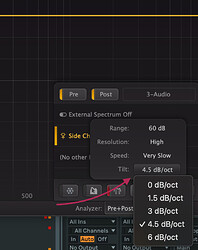It’s generally much trickier to mix on headphones in general, no matter how good they are. It can be done, it IS done frequently, but it’s always good to be able to check your mix in as many places as possible.
I do things a bit backwards because I’m generally not recording in my studio funny enough. I compose and record on headphones, and do my initial mixing that way too. I use AKG 701s, and while they’re pretty accurate and flat after a good break-in time, I still don’t get quite the results I want while mixing. It’s not because I can’t hear everything either, it’s just that something is lost in the translation between the headphones and speakers with air-space. I think maybe a good headphone amp can help here, but would still be at a disadvantage to ALSO having some monitors.
Once I get a mix that sounds good on headphones, and if it’s a track that I plan to pursue and put some additional effort into, THEN I take it into the studio, check the mix and make adjustments on monitors.
Then, if I REALLY care after that, I’ll check it in the living room, in my car, my wife’s car, etc. and make further adjustments to get a good balance on all of the above. I also try on just the phone, on my Macbook speakers, and crappy stock earbuds.
Granted most of what I work on I don’t really care THAT much about as it’s all for fun, but sometimes I end up liking something enough to go through that extra effort.
You generally want to mix with a flat response, but then by all means check it on something that you would LISTEN to music on. The more the better. Maybe even go as far as encoding and compressing it to formats that other people might listen to it on. The more ways you can hear your work the better.
All of that said, yes, you CAN just do it all on headphones, and get good results, but you REALLY need to know the characteristics, limitations, etc. of your headphones, so that you can compensate for that a bit. That’s almost more to think about than just checking your work on more setups/systems/monitors though. At least more mental work.
Also, your ears can get fatigued much more quickly on headphones even at lower volumes, so that plays a part too. You start adjusting things due to your fatigued state, when they were probably right in the first place.
Volume is one more thing and not just fatigue related. Check your mix at super low volumes (to where you can just make things out, at mid volumes, and high volumes. If you can hear everything in your mix and it balances out pretty well at low volumes, then you’re on the right track.
Anyway, just a few thoughts on this as someone that mixes on headphones a lot even though I have other means. I just don’t have a lot of time to spend in my studio alone since my family wants me around funny enough  So I tend to write things on the couch, on the deck, in bed, etc.
So I tend to write things on the couch, on the deck, in bed, etc.
 So I tend to write things on the couch, on the deck, in bed, etc.
So I tend to write things on the couch, on the deck, in bed, etc. Good luck!
Good luck!

